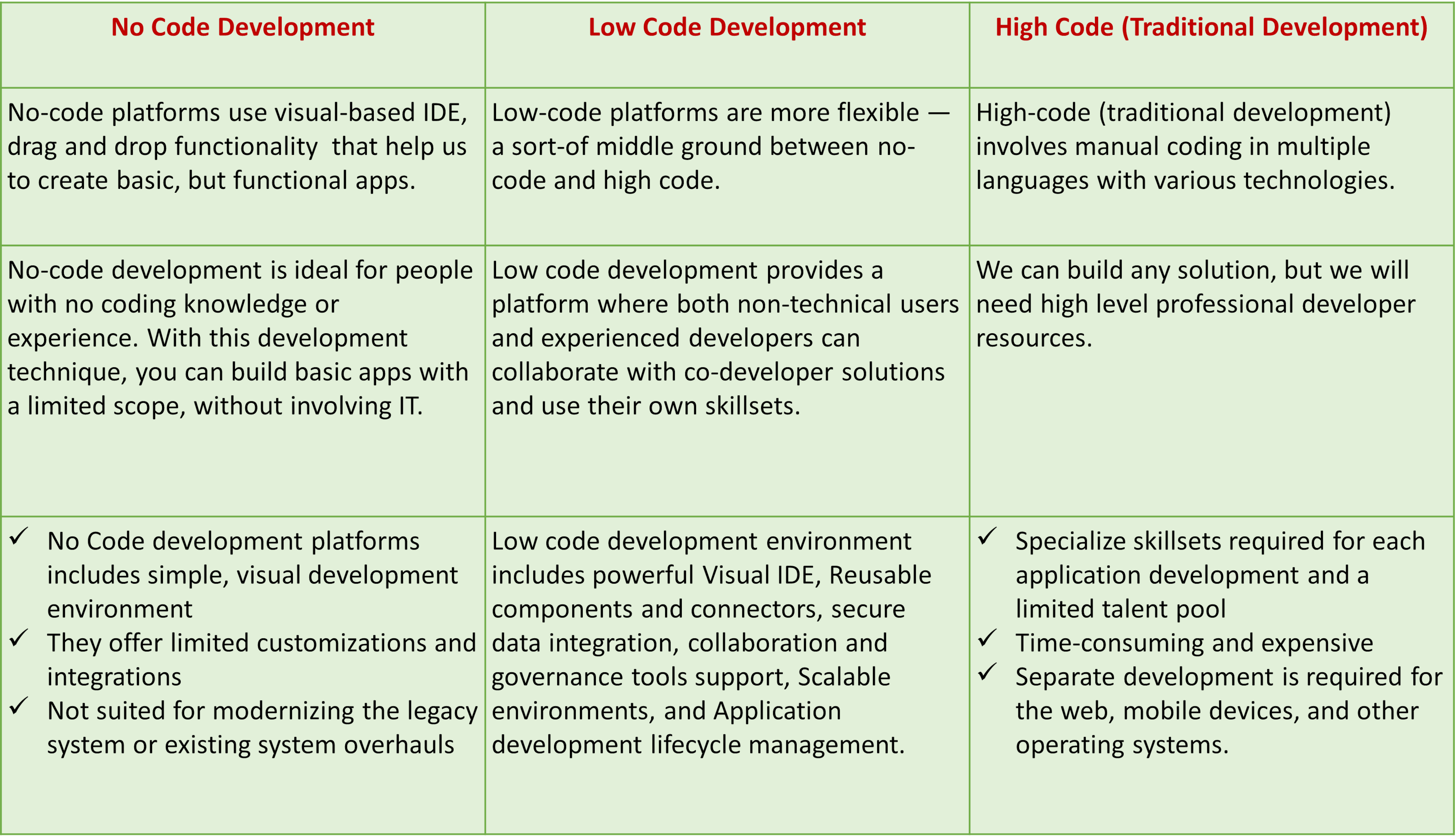Today, the demand for low code software application development is increasing rapidly. Businesses are now looking for the best low code development platform that meets their future needs.
Low-code is a method of application development that transforms coding from textual to visual. An IBM i Low-code platform operates in a model-driven, drag-and-drop interface rather than a technical coding environment. Professional developers, novice developers, subject matter experts, business stakeholders, and decision-makers of all skill levels can use low code to build value-driven enterprise business applications.
This post will discuss everything about low-code development platforms.
What Is Low-Code Development?
Low-code app development is a model-driven or visual way to build and deploy software applications. These low code solutions allow developers to deliver applications faster and with low or no code development.
What Is A Low-Code Development Platform?
The low code development platform eliminates repetitive and tedious operations like dependency management, code validation, and complex builds. It automates the code development workflows and builds software applications with a maximum degree of freedom.
What Are The Low-Code Features And Benefits?
Low-code development automates every single step of the software application lifecycle. in addition, using a low code development platform, software development is more accessible to business users without technical expertise, with features that accelerate the growth of the development process.
Features and Benefits of Low Code
A low code application development platform offers the following features:
- Visual IDE (Integrated Development Environment) for visual modeling. It includes the drag and drop progressive web app builder and visual UI (user interface) functionalities that increase the developer’s productivity.
- Reusable components and connectors to add various components and services. Moreover, this feature helps in building cross-platform business apps with pre-configured modules, logic, templates, and connectors.
- Collaboration and governance tools for revision tracking, feedback loops, managing roles, user stories, messaging, and more.
- Scalable environments for deploying new apps or modernizing existing apps quickly with changing needs of customers or businesses. In addition, low-code cloud-based solutions provide flexibility and support for continuous delivery. These cloud-based applications offer dev-time and run-time scalability on demand.
- Provide secure data integration and artificial intelligence rules. We can securely integrate data and logic from any service, source, or system — including your core legacy systems.
- Low code support in every step of the Application development lifecycle with automated tools. These components streamline the project management activities: version control, requirement management, testing, deployment, and maintenance. Moreover, some powerful low-code platforms incorporate DevOps tools and agile development practices.
What Are The Challenges Of Low-Code?
A low code development platform is quite different from a traditional coding platform. But, few challenges that we may face while choosing a low code development platform for IBM i application development and modernization:
Limited Integration options and Creative Freedom
One of the most common problems which may arise in many low code platforms is vendor lock-in. Therefore, They don’t allow moving products or code from one low code platform to another. So, they offer limited creative Freedom. It is more challenging to preserve simplicity while adding advanced features.
Lack of Customization
Some low-code platforms restrict editing options while others allow access to the source code. Therefore, before working with any platform, be careful to understand all restrictions.
Security Concerns
The security of the underlying data is the main concern with low-code no-code. Some people might want to restrict how or what kind of knowledge is shared. However, it varies from platform to platform.
Rigid Templates and Components
Users can adjust available components and templates in the low code platforms based on the application’s use cases. But, in some situations, it is hard to apply business logic to a lack of building blocks.
Governance Issues
The development of apps on these low-code platforms may pose certain governance problems. because it could be challenging due to the standalone nature of no-code applications.
Low-Code, No-Code, And High-Code (Traditional Development) Platforms: What Are The Differences?
Low code development provides a platform where both non-technical users and experienced developers can collaborate with co-developer solutions and use their own skill sets.

Who Can Build With Low-Code?
The majority of low code users are from enterprise IT departments, also known as professional developers. Low code allows business users (citizen developers) with little to no coding experience to create simple productivity apps.
With separate integrated development environments (IDEs), anyone can use a low-code platform to deal with today’s business challenges. The Low-code platform is targeted at both professional developers and business developers.
All low-code platforms are equal. The main important difference we need to understand is the low-code providers they target. If we want to implement complex functionality, we need to write a certain quantity of code. Furthermore, low code enables subject matter experts, business analysts, process owners, and company owners to become application developers.
What Are The Best Low-Code Development Platforms?
There are several low-code development platforms available on the market. We have enlisted the code development platforms that are currently popular in 2022.
- Visual LANSA
- Salesforce
- Oursystems
- Retool
- Microsoft Power Apps
- Quixy
- Creatio
- GeneXus
- Strikingly
- Appian
- UI Bakery
Visual LANSA is one of the most popular low code IBM i software development platforms. It enables businesses to update their outdated systems according to modern customer needs. Businesses may more rapidly and simply create new enterprise-level applications such as mobile applications, web, and desktop applications with LANSA. Furthermore, Visual Lansa offers some important features that we listed:
- Single Low-Code Language and powerful Visual Development Environment
- Provides low code tools and services for digital transformation
- Powerful capabilities for legacy modernization
- characteristics for flexible integration
- Easy deployment across multiple platforms
How To Pick A Low-Code Platform To Improve IBM i Developer Productivity?
Our low code platform should be equipped to help us meet the increasing demand for software solutions. So, when you pick a low code platform for the development of IBM i series applications, you can use the below evaluation criteria:
- Use the low code platform in which separate collaborative IDEs should be available for both professional and citizen developers. Furthermore, the low code platforms should have built-in tools to facilitate real-time collaboration between IT and business throughout the development lifecycle.
- Our Low code platform should have the ability of data integration with internal or external sources without compromising data security. Moreover, Check the use cases and what kind of applications we need to develop and deliver.
- Low-code platforms should incorporate some set of tools and services for continuous support throughout the application development lifecycle.
- The platform should offer a no-code IDE with drag-and-drop features, real-time collaboration tools, and reusable components to support developers of all skill sets. in this way, it enhances IBM i developer productivity.
- The low code platform we choose should offer operational and development support for web, mobile, and conversational experiences to optimize the end-user experiences.
- The platform should provide cloud support to develop scalable cloud-native apps.
Are you looking for the best low-code development platform for IBM i application development?
LANSA offers different IBM i modernization tools. Visual LANSA is one of the most popular low code platforms that enable organizations to design applications with excellent user experiences, implement workflow automation solutions, and update legacy systems.
Are you ready to begin? However, for choosing the best low code development platform for your business, Visit LANSA to experience one of the best low-code platform today for low code development and the modernization of IBM i legacy solutions.










